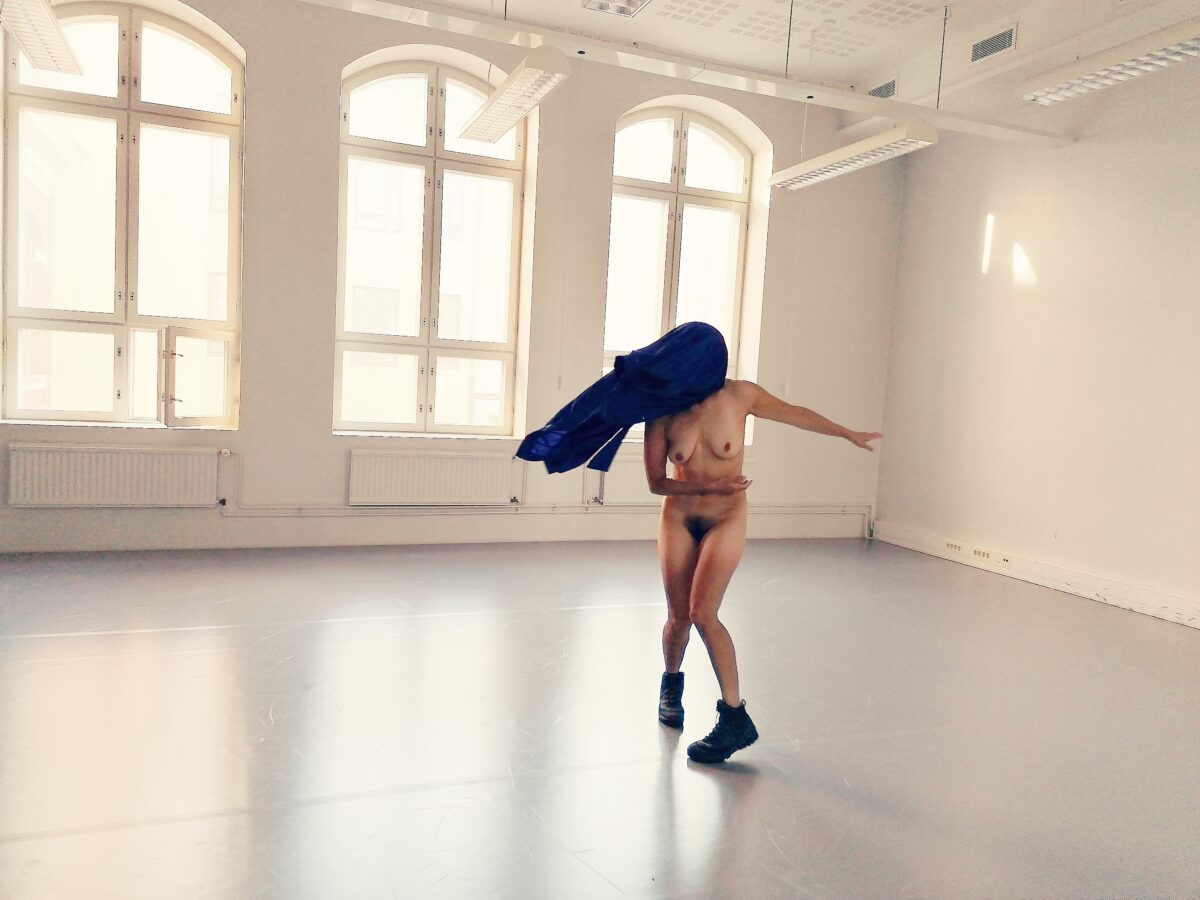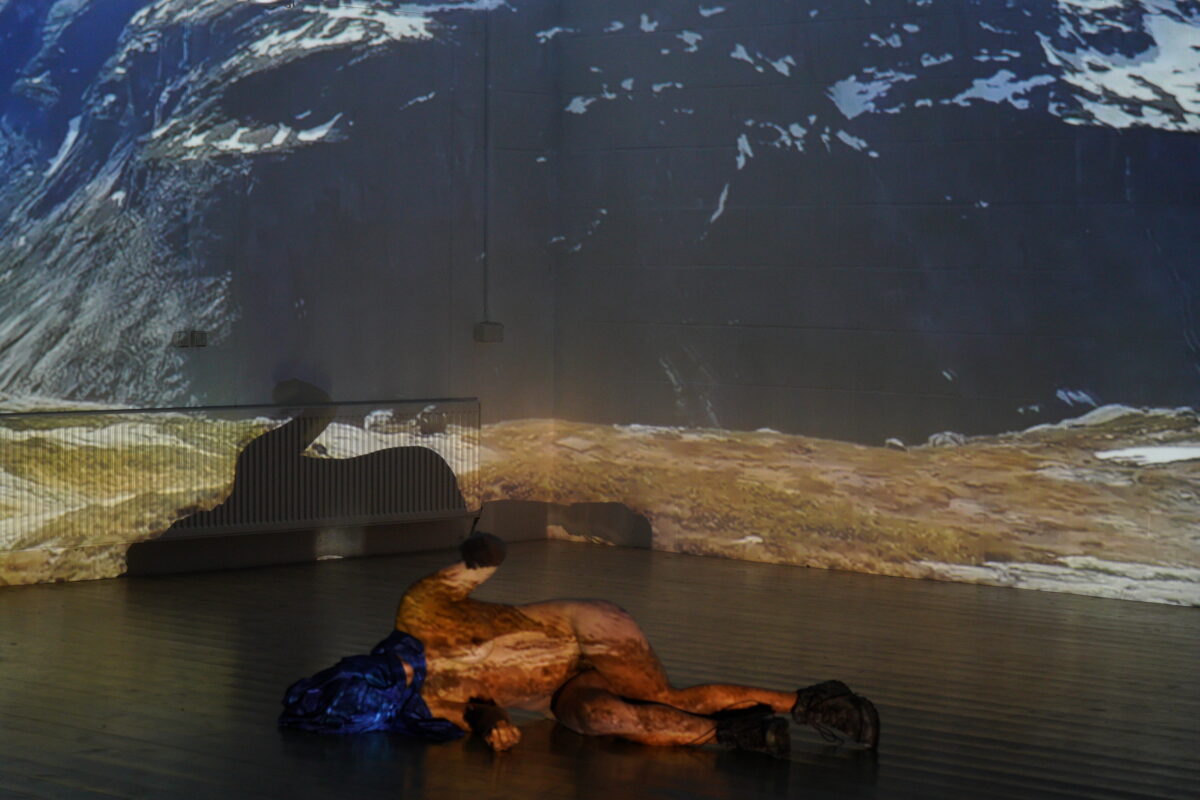LakeStudios Berlin residency in Germany has given to me an opportunity to perform already existed Wanderlust themed multidisciplinary dance piece: Let the wandering talk on it´s own behalf and at the same time to rework and widen perspectives of Wanderlust practice in dance art field and work that I started since 2020. As a dance artist I wonder what kind of new reflection my writing, questions and notes throughout the process could bring. In the previous work Let the wandering talk on it´s own behalf I researched Wanderlust from the perspectives of women embodiment and experiencing the culture, mythologies and human behaviour in the vast landscape of the hike in Trolltunga hike in Norway 2020. I have been especially interested in a writer, feminist, activist Rebecca Solnit´s literature of walking and history from the perspective of distance and poetic language of it and as well from the history, culture and thinking and walking point of view. Wanderlust means longing for a faraway place. The term comes out from German word Wundern (To wander) and Lust (Desire).
During my residency stay I found in the backyard of LakeStudio Berlin in Germany a small hill. I started my practice by crossing that backyard´s hill with my eyes being closed. I did the crossing almost every day during my entire residency in February 2024. While crossing that hill with closed eyes I experienced in my embodiment how 30, 10, 5, or even 1 meter felt as vast landscapes. The journey become huge while crossing that hill. At the same time, there happened so many detailed and shaky movement in my body. I decided to call that movement tactile or haptic movement. I also wanted to use video camera in my work, so I could understand better what I was doing and vice versa what the practice was doing to me.
According to Wikipedia by 20th century tactile had developed a psychological sense, describing individuals whose perception supposedly depended primary on touch rather than sight. I discovered by crossing that hill that my practice is going towards tactile movement that is processing a sense of touch rather than immediate touch but at the same time as well touch. Simultaneously the practice of tactility provides another kind of reading in the territory of the hill and about it. Through the practice I started to think about the arriving, how unpleasant was to just to arrive. I also thought how many times we are transported rapidly to the places. I notices how more excited was to stay in the journey with closed eyes and discover the territory inch by inch. Tangible is another kind of word that reminds me about the tactile practice during my crossings of the hill. Crossing made me think as well how I could transfer my experience to the performance situation on the stage. It also brought as well a challenge to bring the outside work to indoors.
Arriving felt like dirty word. Diary 19.2.2024.
I also remember quote from Finnish dancer Katri Soini during her contemporary dance class where she emphasized not goal orientated mind but rather staying and processing things through the journey.
I wanted to add the sentence as well from a French philosopher from the Face to Face with the landscape book (journalists Yrjö Sepänmaa, Liisa Heikkilä-Palo & Virpi Kaukio) by Maurice Merleau-Ponty: “Information that is generated by touch does not return to the language of sight.” This sentence has interesting meaning if we think about human sensory relation to the environment. I also started to think how much knowledge there is in the non-human nature that we still don’t know and also what does it meant to know especially from the perspective of sensing through the movement action in a relation to the environment?
Because I work in the Wanderlust practice from the desire perspective as well I also got interested question of freedom. An academic and activist Jack Halberstram is writing in the A Wild Things book about human attraction to the wild and Jack suggests, “What if staying is the way of wildening”. Really beautiful question such as “Where can the wild take you.” got me inspired as well. I decided to stay to cross that hill every day, as odd and stupid it sound. Another way of looking at the freedom question in a relation to the Wanderlust I could see in American writer, feminist and activist Rebecca Solnit work who describes in Men explains things to me book: “How wandering can also be a way to dream, imagine and hear yourself.”
I red as well few books during my practice and these quotes made me gain an inspiration and trust in the creation process where first of all I have been on my own. Quotes are from writer and choreographer Jonathan Burrow from A choreographer´s handbook (Book from the Lake Studios Berlin residency library)
„If you care where you are then we will care as well.”
“Accept what comes easily.”
“Sometimes material knows more than you.”
Because I started to work with closed eyes I decided to read short interview from American choreographer Lisa Nelson from the book of Nouvelle de Dance book (Also in the library of LakeStudio Berlin), who has as well worked in her practice with closed eyes. Nelson speaks really nicely how to work from the perspectives of being seen and seeing at the same time. It made me really thing about how to bring the practice from outside with the closed eyes to indoor, on the stage. How this two parallel words could create a dialog that deals first of all with the wandering embodiment, memory and absence in a relation to the hill, crossings, landscapes and something else that yet I dont know…
This thought stayed with me from Lisa´s interview:
“Unknown is as desire to learn.”
- Photo(c) Ingrid Andre & Garbriele Goria from the promo photos of Let the wandering talk on it´s own behalf in Liisa Pentti + Co residency in Helsinki/Finland.
- Photo (c) Maria Kousi from the Let the wandering talk on it´s own behalf (Pärssinen & Rose) in Unfinished Friday 106# in LakeStudio Berlin. In the photo Nadja Pärssinen.


